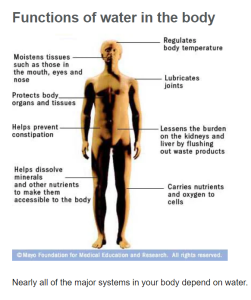A HEALTH GUIDE FOR MEN
National Cancer Institute, www.cancer.gov (U.S.)
This handout can help answer your questions about prostate changes that happen with age as well as provide basic information about common prostate changes.
What is the prostate?
The prostate is a small gland in men. It is part of the male reproductive system.
The prostate is about the size and shape of a walnut. It sits low in the pelvis, below the bladder and just in front of the rectum. The prostate helps make semen, the milky fluid that carries sperm from the testicles through the penis when a man ejaculates.
The prostate surrounds part of the urethra, a tube that carries urine out of the bladder and through the penis.
How does the prostate change with age?
The prostate gland surrounds the tube (urethra) that passes urine. This can be a source of problems as a man ages because:
- The prostate tends to grow bigger with age and may squeeze the urethra or
- A tumor can make the prostate biggerThese changes, or an infection, can cause problems passing urine. Sometimes men in their 30s and 40s may begin to have these urinary symptoms and need medical attention. For others, symptoms aren’t noticed until much later in life. Be sure to tell your doctor if you have any urinary symptoms.Tell your doctor if you:
- Are passing urine more during the day
- Have an urgent need to pass urine
- Have less urine flow
- Feel burning when you pass urine
- Need to get up many times during the night to pass urineProstate changes you should be aware of.Growing older raises your risk of prostate problems. The three most common prostate problems are:
- Infection (prostatitis)
- Enlarged prostate ( BPH, or benign prostatichyperplasia)
• Prostate cancer
One change does not lead to another. For example, having prostatitis or an enlarged prostate does not raise your chance of prostate cancer. It is also possible for you to have more than one condition at the same time.
Most men have prostate changes that are not cancer.
What are common tests for prostate changes?
Abnormal findings from any of these tests can help diagnose a problem and suggest the next steps to take:
• DRE (digital rectal exam)–a test to feel the prostate• PSA (prostate-specific antigen) test–a blood test• Biopsy–a test to check for cancer
TYPES OF TESTS
These types of tests are most often used to check the prostate:
Health history and current symptoms.
This first step lets your doctor hear and understand the “story” of your prostate concerns. You’ll be asked about whether you have symptoms, how long you’ve had them, and how much they affect your lifestyle. Your health history also includes any risk factors, pain, fever, or trouble passing urine. You may be asked to give a urine sample for testing.
Digital rectal exam.
DRE is the standard way to check the prostate. With a gloved and lubricated finger, your doctor feels the prostate from the rectum. The test lasts about 10-15 seconds.
This exam checks for:
• The size, firmness, and texture of the prostate• Any hard areas, lumps, or growth spreading
beyond the prostate
• Any pain caused by touching or pressing the
prostate
The DRE allows the doctor to feel only one side of the prostate. A PSA test is another way to help your doctor check your prostate.
PSA (Prostate-Specific Antigen) test.
PSA is a protein made by normal cells and prostate cancer cells. It is found in the blood and can be measured with a blood test. PSA tests are often used to follow men after prostate cancer treatment. PSA testing is still being studied to see if finding cancer early lowers the risk of dying from prostate cancer.
PSA levels can rise if a man has prostate cancer, but a high PSA is not proof of cancer. Other things can also make PSA levels go up. These may give a false positive test result. These include having BPH or prostatitis, or if the prostate gland is disturbed in any way (riding a bicycle or motorcycle, a DRE, orgasm within the past 24 hours, and prostate biopsy or surgery can disturb the prostate). Also, some prostate glands naturally produce more PSA than others. PSA levels go up with age. African- American men tend to have higher PSA levels in general than men of other races.
Researchers are trying to find more answers about:
• ThePSAtest’sabilitytotellcancerfrombenign prostate problems
• ThebestthingtodoifamanhasahighPSAlevel
For now, men and their doctors use PSA readings over time as a guide to see if more follow-up is needed.
What do PSA results mean?
PSA levels are measured in terms of units per volume of fluid tested. Doctors often use a score of 4 nanograms (ng) or higher as the trigger for further tests, such as a prostate biopsy.
Your doctor may monitor your PSA velocity, which means looking at the rate of change in your PSA levels over time. Rapid increases in PSA readings can suggest cancer. If you have a mildly elevated PSA, you and your doctor may choose to check PSA levels on a scheduled basis and watch for any change in the PSA velocity.
Prostate biopsy.
If your symptoms or test results suggest cancer, your doctor will refer you to a specialist (a urologist) for a prostate biopsy. A biopsy is usually done in the doctor’s office.
For a biopsy, small tissue samples are taken directly from the prostate. Your doctor will take samples from several areas of the prostate gland. This can help lower the chance of missing any areas of the gland that may have cancer cells. Like other cancers, doctors can only diagnose prostate cancer by looking at tissue under a microscope.
Most men who have biopsies after routine exams do not have cancer.
For more information on prostate health visit:







